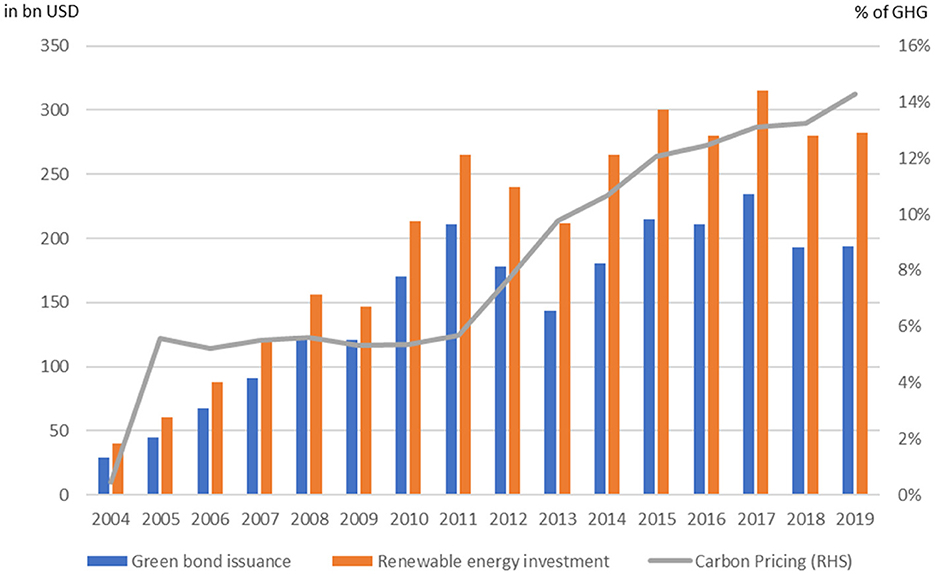From federal investment to regional economic transformation: A new model linking industry growth to economic mobility – Brookings

Report on Regional Economic Transformation and its Alignment with Sustainable Development Goals
A new model of regional economic transformation is emerging in the United States, catalyzed by federal legislation such as the CHIPS and Science Act. This approach moves beyond traditional economic development by strategically aligning public, private, and civic efforts to achieve long-term, inclusive, and sustainable growth. This report analyzes this model, highlighting its direct contributions to the United Nations Sustainable Development Goals (SDGs), particularly SDG 8 (Decent Work and Economic Growth), SDG 9 (Industry, Innovation, and Infrastructure), SDG 10 (Reduced Inequalities), and SDG 17 (Partnerships for the Goals).
The Imperative for a Sustainable and Inclusive Economic Model
Despite national economic growth, significant portions of the population face challenges in achieving a decent standard of living, undermining progress towards SDG 1 (No Poverty) and SDG 10 (Reduced Inequalities). Public trust in national leadership is low, placing pressure on regional actors to deliver solutions. The core challenge is twofold: creating high-quality employment and maintaining an affordable cost of living, a dual mandate essential for fostering sustainable cities and communities as outlined in SDG 11.
To advance SDG 8, regions must cultivate advanced industries that offer higher wages and are accessible to workers without four-year degrees. However, the growth of these innovation economies has often exacerbated affordability issues, limiting broad-based prosperity. Federal place-based policies have aimed to direct investment toward economically distressed areas, aligning with SDG 9 by incentivizing private investment in strategic sectors like clean energy (SDG 7) and semiconductors. The responsibility for translating these investments into tangible, equitable outcomes now largely rests with regional leadership.
Case Study: Central New York’s Approach to Regional Economic Transformation
The Central New York region, centered around Syracuse, provides an illustrative case study of this new model in action. Following decades of industrial decline, the region is leveraging a $100 billion investment from Micron Technology, supported by federal and state incentives, to catalyze a transformation rooted in SDG principles.
A Unified Vision for Sustainable Development (SDG 8 & SDG 10)
Central New York has developed a holistic vision for inclusive growth that marries industrial competitiveness with social equity. This strategy recognizes that global competitiveness is unattainable without investing in the entire population, directly addressing the objectives of SDG 8 and SDG 10. The regional economic development organization, CenterState CEO, has integrated functions spanning business attraction, workforce development, and racial equity initiatives to ensure that economic growth translates into upward mobility for all residents.
Co-Investment for Resilient Infrastructure and Industry (SDG 9 & SDG 17)
A cornerstone of the region’s strategy is sustained co-investment from public, private, and philanthropic partners, a clear demonstration of SDG 17. This collaborative funding has built a robust ecosystem for innovation.
- State-level investments in the Albany NanoTech Complex and incentives for semiconductor projects laid the groundwork for attracting major private investment.
- The federal CHIPS and Science Act provided critical funding, which was amplified by New York’s Green CHIPS legislation, linking incentives to sustainability and local procurement goals, thereby supporting SDG 7 (Affordable and Clean Energy) and SDG 12 (Responsible Consumption and Production).
- The resulting deal includes a $500 million Community Investment Fund (CIF), co-funded by Micron, to ensure the benefits of industrial development are shared broadly.
Collaborative Alignment for Inclusive Communities (SDG 11 & SDG 17)
The region’s success hinges on a broad, multi-stakeholder coalition that embodies the spirit of SDG 17. To guide the CIF, a Community Engagement Committee was formed, comprising leaders from industry, philanthropy, government, education, and community organizations. This committee developed a strategy based on extensive resident input, focusing on investments that promote key SDGs:
- Educational resources and access (SDG 4: Quality Education)
- Support for minority-, women-, and veteran-owned businesses (SDG 5: Gender Equality & SDG 10: Reduced Inequalities)
- Workforce development and job opportunities (SDG 8: Decent Work and Economic Growth)
- Housing, community development, and quality of place (SDG 11: Sustainable Cities and Communities)
- Community health and family supports (SDG 3: Good Health and Well-being)
Six Strategic Shifts for Achieving Regional Economic Transformation
The Central New York experience, along with efforts in other regions, reveals six fundamental shifts required to move from traditional economic development to a transformational model aligned with the SDGs.
Shift in Focus
From Jobs to Inclusive Growth (SDG 8 & SDG 10)
Transformational strategies prioritize high-quality jobs in advanced industries that provide pathways to economic mobility, with an intentional focus on including underrepresented populations to reduce systemic inequalities.
From Marketing to Market-Shaping Strategies (SDG 9)
Regions must make strategic bets on future-oriented industries where they can be competitive, such as quantum computing or biomanufacturing. This involves concentrating resources and partnerships to build resilient and innovative industrial ecosystems.
From Top-Down to Coalitional (SDG 17)
Lasting transformation requires inclusive, coalition-based strategies that build trust and ensure buy-in from a wide range of community and industry stakeholders, moving beyond closed, top-down decision-making.
Shift in Investment
From Fragmented Funding to Co-Investment (SDG 17)
Regions must orchestrate shared investment models that blend local, state, federal, private, and philanthropic capital. This approach enables risk-sharing and provides the sustained, flexible funding needed for long-term initiatives.
Shift in Alignment
From Siloed Programs to Aligned Teams (SDG 17)
Effective execution requires an integrated team of diverse organizations working in service of a shared strategy. A dedicated backbone organization is crucial for coordinating efforts, aligning investments, and facilitating collaboration across sectors.
From Performance Measurement to Performance Management
To build trust and ensure accountability, regions must adopt performance management systems that use data for continuous learning and real-time strategic adaptation. This enhances transparency and helps coalitions track progress toward shared goals, including specific SDG targets.
Conclusion: Sustaining National Progress on the Sustainable Development Goals
In an era of economic uncertainty and fractured public trust, the model of inclusive regional economic transformation offers a viable path forward. By integrating the principles of the Sustainable Development Goals, regions can turn technological disruption and industrial investment into shared, durable prosperity.
Sustaining this momentum requires a concerted effort aligned with SDG 17 (Partnerships for the Goals):
- Government must provide the enabling policy conditions and investments in research, infrastructure, and education (SDG 9 & SDG 4).
- Philanthropy can act as a catalyst, funding high-risk initiatives, supporting peer learning, and enhancing civic capacity.
- The private sector must lead in market-aligned strategies that create decent work and economic growth (SDG 8).
- Community and education partners are essential for connecting residents to opportunities and ensuring equitable outcomes (SDG 10 & SDG 4).
Ultimately, transforming a regional economy is a collective endeavor. The success of federal initiatives like the CHIPS and Science Act will be determined by the capacity of local and regional coalitions to work collaboratively. By doing so, they can not only build globally competitive industries but also advance economic mobility, rebuild community trust, and make significant contributions to the nation’s progress on the Sustainable Development Goals.
Analysis of Sustainable Development Goals in the Article
1. Which SDGs are addressed or connected to the issues highlighted in the article?
-
SDG 1: No Poverty
- The article directly addresses poverty by mentioning that the Syracuse metro area ranked near the bottom for “poverty reduction” and that leaders aimed to “elevate our most economically fragile people.” The concept of “thriving families” earning enough to cover basic costs is a direct measure related to poverty and economic well-being.
-
SDG 4: Quality Education
- The article emphasizes workforce development, talent, and education as crucial components of regional economic transformation. It highlights initiatives for “talent development and up-skilling,” investments in “education, infrastructure, and tech-driven entrepreneurship,” and programs to “expose high school students to high-value careers.”
-
SDG 5: Gender Equality
- The article touches upon this goal by explicitly mentioning the need for intentional investments in “minority-, women-, and veteran-owned businesses” as part of the Community Priorities Document in Syracuse. This points to efforts to ensure economic opportunities are accessible to women.
-
SDG 8: Decent Work and Economic Growth
- This is a central theme. The entire article revolves around creating “good jobs,” “high-quality jobs,” and “better jobs” to boost productivity and help people “move up the economic ladder.” It focuses on growing advanced industries that provide higher wages and opportunities for workers without four-year degrees.
-
SDG 9: Industry, Innovation, and Infrastructure
- The article is fundamentally about industrial strategy, focusing on the CHIPS and Science Act to rebuild capacity in semiconductors and other emerging technologies. It details massive investments in infrastructure, R&D (e.g., Albany NanoTech Complex), and advanced manufacturing facilities (e.g., Micron, Wolfspeed) to foster innovation and industrial growth.
-
SDG 10: Reduced Inequalities
- The concept of “inclusive growth” is a cornerstone of the strategy discussed. The article repeatedly mentions reconnecting “long-marginalized communities,” investing in “economically distressed places,” and ensuring that economic transformation benefits a “broad swath of workers, small businesses, and communities” to reduce economic divergence between regions and populations.
-
SDG 11: Sustainable Cities and Communities
- The focus on “regional economic transformation” directly relates to making cities and communities more inclusive, resilient, and sustainable. The article addresses the challenge of housing affordability, noting that successful regions “expanded their housing supply,” and highlights investments in “housing, community development, and quality of place.”
-
SDG 17: Partnerships for the Goals
- The article extensively details the necessity of multi-stakeholder partnerships. It describes “broad, collaborative alignment” between government, business, philanthropy, higher education, and community organizations as the key to success. The formation of coalitions like CenterState CEO, Innovate Illinois, and the Southwestern Pennsylvania New Economy Collaborative are prime examples.
2. What specific targets under those SDGs can be identified based on the article’s content?
-
Under SDG 1 (No Poverty)
- Target 1.2: By 2030, reduce at least by half the proportion of men, women and children of all ages living in poverty in all its dimensions according to national definitions. The article’s focus on “poverty reduction” and elevating “economically fragile people” directly aligns with this target.
-
Under SDG 4 (Quality Education)
- Target 4.4: By 2030, substantially increase the number of youth and adults who have relevant skills, including technical and vocational skills, for employment, decent jobs and entrepreneurship. This is evidenced by initiatives like the ON-RAMP program, the Heartland BioWorks strategy to “train and graduate over 1,000 Hoosiers,” and efforts to create “new pathways into in-demand jobs.”
-
Under SDG 8 (Decent Work and Economic Growth)
- Target 8.2: Achieve higher levels of economic productivity through diversification, technological upgrading and innovation, including through a focus on high-value added and labour-intensive sectors. The article’s emphasis on “advanced industries,” “semiconductors,” “quantum computing,” and “biomanufacturing” is a direct reflection of this target.
- Target 8.5: By 2030, achieve full and productive employment and decent work for all women and men, including for young people and persons with disabilities, and equal pay for work of equal value. The goal of creating “high-quality jobs” that are “accessible to workers without a four-year degree” supports this target.
-
Under SDG 9 (Industry, Innovation, and Infrastructure)
- Target 9.2: Promote inclusive and sustainable industrialization and, by 2025, significantly raise industry’s share of employment and gross domestic product, in line with national circumstances, and double its share in least developed countries. The CHIPS Act and related state-level investments are explicitly designed to achieve this by reindustrializing the U.S. economy in strategic sectors.
- Target 9.b: Support domestic technology development, research and innovation in developing countries, including by ensuring a conducive policy environment for, inter alia, industrial diversification and value addition to commodities. The article details how federal and state policies are creating an environment to support domestic semiconductor R&D and manufacturing.
-
Under SDG 10 (Reduced Inequalities)
- Target 10.2: By 2030, empower and promote the social, economic and political inclusion of all, irrespective of age, sex, disability, race, ethnicity, origin, religion or economic or other status. The focus on “inclusive growth,” directing investments to “economically distressed places,” and creating opportunities for “long-marginalized communities” and “underrepresented workers” directly addresses this target.
-
Under SDG 11 (Sustainable Cities and Communities)
- Target 11.1: By 2030, ensure access for all to adequate, safe and affordable housing and basic services and upgrade slums. The article identifies constrained housing supply as a major challenge and praises regions that “expanded their housing supply” to maintain affordability, aligning with this target.
- Target 11.3: By 2030, enhance inclusive and sustainable urbanization and capacity for participatory, integrated and sustainable human settlement planning and management in all countries. The entire model of “regional economic transformation” through broad, coalition-based strategies and community engagement (e.g., the Community Engagement Committee in Syracuse) exemplifies this target.
-
Under SDG 17 (Partnerships for the Goals)
- Target 17.17: Encourage and promote effective public, public-private and civil society partnerships, building on the experience and resourcing strategies of partnerships. The article is a case study in this target, describing how “co-investment” from public, private, and philanthropic sources and “coalition-based strategies” are essential for success.
3. Are there any indicators mentioned or implied in the article that can be used to measure progress towards the identified targets?
-
For Economic Well-being and Poverty (SDG 1, SDG 8, SDG 10)
- Share of “thriving families”: The article defines this as “earning enough to cover the basic costs of housing, child care, transportation, and energy,” a direct indicator of economic security.
- Job and wage gains: The text notes that the impacts of reinvestment will eventually materialize as “job and wage benefits,” which can be tracked.
- Wage differentials: The statistic that the “average worker in advanced industries earns nearly double the average worker outside of them” can be used as a benchmark.
- Poverty reduction rates: The article mentions Syracuse’s past ranking in “poverty reduction,” implying this is a key metric for success.
-
For Industrial and Economic Investment (SDG 9)
- Amount of public and private investment: The article provides specific figures, such as Micron’s “$100 billion investment,” “$750 billion in private investment” incentivized by public funds, and the “$52 billion federal package” from the CHIPS Act.
-
For Education and Workforce Development (SDG 4)
- Number of people trained: The goal to “train and graduate over 1,000 Hoosiers for careers in biomanufacturing” is a clear output indicator.
- Workforce training enrollments: Mentioned as a program-level input tracked by Tulsa’s performance management system.
-
For Inclusive Growth (SDG 5, SDG 10)
- Investment in minority- and women-owned businesses: The Community Priorities Document explicitly lists this as a focus area, suggesting that the amount of investment and number of businesses supported would be key indicators.
- Job placement for specific populations: Tracking job placement and wage gains for residents from marginalized communities is implied as a measure of inclusive growth.
-
For Sustainable Communities (SDG 11)
- Housing supply vs. population growth: The article points to the ratio of housing supply expansion relative to population growth as a key indicator of affordability.
-
For Partnerships (SDG 17)
- Number and diversity of coalition partners: The article quantifies this by mentioning initiatives involving “over 1,000 leaders” or “more than 40 organizations,” indicating that the scale and breadth of collaboration is a measure of success.
4. Table of SDGs, Targets, and Indicators
| SDGs | Targets | Indicators Identified in the Article |
|---|---|---|
| SDG 1: No Poverty | 1.2: Reduce poverty in all its dimensions. | Share of “thriving families” (earning enough for basic costs); Regional ranking in poverty reduction. |
| SDG 4: Quality Education | 4.4: Increase the number of youth and adults with relevant skills for employment. | Number of graduates from specific training programs (e.g., 1,000 Hoosiers); Workforce training enrollment numbers. |
| SDG 5: Gender Equality | 5.5: Ensure women’s full participation and equal opportunities for leadership in economic life. | Level of investment in women-owned businesses. |
| SDG 8: Decent Work and Economic Growth | 8.2: Achieve higher levels of economic productivity through technological upgrading and innovation. 8.5: Achieve full and productive employment and decent work for all. |
Creation of “good” and “high-quality” jobs; Job and wage gains; Wage levels in advanced industries vs. other sectors; Job placement rates. |
| SDG 9: Industry, Innovation, and Infrastructure | 9.2: Promote inclusive and sustainable industrialization. 9.b: Support domestic technology development, research and innovation. |
Total public and private investment in strategic sectors (e.g., $100B from Micron, $750B in private investment); Number of new manufacturing/R&D facilities. |
| SDG 10: Reduced Inequalities | 10.2: Empower and promote the social and economic inclusion of all. | Flow of investment to economically distressed places; Job and wealth-building opportunities for marginalized communities and underrepresented workers. |
| SDG 11: Sustainable Cities and Communities | 11.1: Ensure access to adequate, safe and affordable housing. 11.3: Enhance inclusive and sustainable urbanization. |
Rate of housing supply expansion relative to population growth; Level of investment in community development and quality of place. |
| SDG 17: Partnerships for the Goals | 17.17: Encourage and promote effective public, public-private and civil society partnerships. | Number and diversity of organizations and leaders involved in regional coalitions (e.g., “over 1,000 leaders,” “more than 40 organizations”). |
Source: brookings.edu

What is Your Reaction?
 Like
0
Like
0
 Dislike
0
Dislike
0
 Love
0
Love
0
 Funny
0
Funny
0
 Angry
0
Angry
0
 Sad
0
Sad
0
 Wow
0
Wow
0












































































